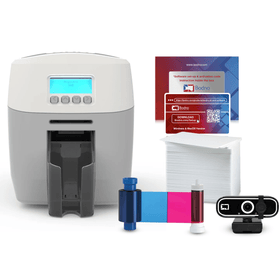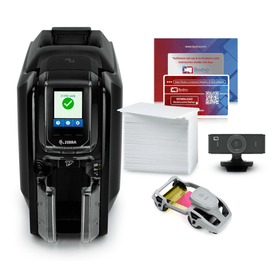You must pick between usual ID cards and their laminated counterparts when buying cardstock to use as part of an organizational ID program. The outcomes of the choice will dictate what you will do with an array of other significant aspects of the program, including your ID card supply cost. Several people initially consider the higher rate of lamination-enabled ID card printers or the financial burden of purchasing laminating machines featuring pouches. The notion of lamination put those people off.
However, there are numerous benefits to laminating ID cards for your organization and its program, including obvious and more obscure advantages. Read on to know more information about how you can benefit from utilizing laminated cards.
For a person who is unfamiliar with the cards, the word lamination means the electronic process of applying a protective laminate layer on a PVC, synthetic paper or composite ID card. While laminate is typically clear, it sometimes contains images, such as holographic foils, used for security purposes. ID cards get laminated in the following ways.
- At printing: There are PVC identity card printers that can laminate the cards soon after the application of the print. The devices churn out dozens of laminated and fully printed cards an hour but come at thousands of US dollars.
- Using pouches: An ID program that is less robust may offer ID credentials that work with laminating pouches. The pouches are available in common card sizes as well as are typically made of polyethylene and polyester. Cards are put in those pouches in printed form, and the pouches are run through a laminating machine.
There are advantages and disadvantages to using the aforementioned methods. One may be fast but is costly and suits large-scale applications. The other may be the more affordable option but requires longer printing.
That said, the two methods offer the following benefits.
Lamination Will Make ID Cards To Last Longer
Several steps help to ensure the longevity of the device, including keeping the ID printers ID card software up-to-date. Likewise, a simple step like laminating the cards makes them more durable, which is the point of utilizing lamination. It has been shown that laminated credentials last longer as compared to their non-laminated counterparts in normal use.
Lamination Will Keep The Cards Looking Professional
One of the most important purposes of using ID cards is to project an air of professionalism when at work. The cards you issue will be among the first things that guests see as they enter your business or company location. Damaged or low-quality ID cards will not leave a good first impression on them. This means that your organization’s ID program serves as its reflection.













 Software
Software Upgrades
Upgrades Support Plans
Support Plans Self Serve
Self Serve Printer Setup
Printer Setup



